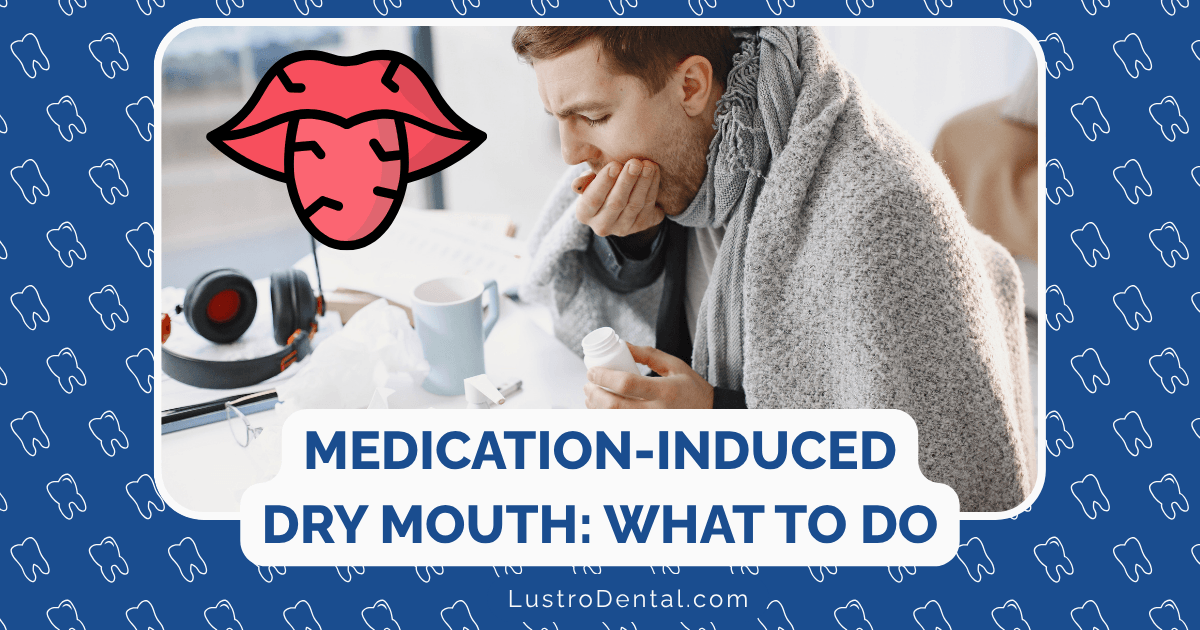Mindfulness Practices for Dental Anxiety and Oral Health: A Comprehensive Guide

The sound of dental instruments. The sterile smell of the clinic. The anticipation of potential discomfort. For millions of people, these sensory experiences trigger a wave of anxiety that can range from mild unease to debilitating fear. Dental anxiety affects approximately 36% of the population, with 12% suffering from extreme dental fear that prevents them from seeking necessary care.
As a dental health advocate, I’ve witnessed how this anxiety creates a destructive cycle: fear leads to avoidance of dental visits, which results in worsening oral health, which ultimately requires more invasive treatments—further reinforcing the initial anxiety. Breaking this cycle is essential not just for oral health, but for overall well-being.
In recent years, mindfulness practices have emerged as powerful tools for managing dental anxiety while simultaneously improving oral health outcomes. In this comprehensive guide, we’ll explore evidence-based mindfulness techniques that can transform your dental experience and enhance your relationship with oral health.
Understanding the Mind-Mouth Connection
Before diving into specific practices, it’s important to understand the bidirectional relationship between our mental state and oral health.
The Impact of Anxiety on Oral Health
Research from Penn Dental Medicine highlights several ways anxiety affects oral health:
- Physiological Changes: Anxiety triggers the release of stress hormones like cortisol, which can:
- Reduce saliva production, increasing risk for cavities and gum disease
- Compromise immune function, making the mouth more susceptible to infections
- Increase inflammation throughout the body, including periodontal tissues
- Behavioral Changes: Anxiety often leads to:
- Neglect of oral hygiene routines
- Stress-related habits like teeth grinding (bruxism)
- Avoidance of preventive dental care
- Poor dietary choices that impact oral health
- Treatment Complications: During dental procedures, anxiety can cause:
- Heightened pain perception
- Difficulty cooperating with treatment
- Longer appointment times
- Increased likelihood of complications
A groundbreaking 2024 study published in Heliyon found that dental anxiety acts as a mediator between psychological factors and dental neglect, suggesting that addressing anxiety could be key to improving oral health behaviors.
How Mindfulness Transforms Dental Experiences
Mindfulness—defined as the practice of paying attention to the present moment with curiosity, openness, and non-judgment—offers multiple benefits for dental patients:
- Anxiety Reduction: A 2025 study published by the American Dental Association found that patients who practiced mindfulness techniques experienced a remarkable 40% decrease in dental anxiety compared to control groups.
- Improved Treatment Outcomes: The same study revealed that mindfulness practitioners showed better adherence to treatment plans and were more likely to keep follow-up appointments.
- Enhanced Pain Management: Mindfulness has been shown to alter pain perception by changing how the brain processes pain signals.
- Better Oral Hygiene Habits: When applied to daily oral care routines, mindfulness can transform mundane habits into opportunities for presence and self-care.
Dr. Christina DiBona Pastan, Director of Mind-Body Wellness at Tufts University School of Dental Medicine, explains: “Mindfulness creates a fundamental shift in our relationship with dental experiences. Rather than being caught in cycles of anticipatory anxiety and avoidance, patients learn to stay present with sensations, thoughts, and emotions without being overwhelmed by them.”
Evidence-Based Mindfulness Practices for Dental Anxiety
Let’s explore specific mindfulness techniques that research has shown to be effective for dental anxiety:
1. Diaphragmatic Breathing (Three-Part Breath)
Perhaps the most accessible and immediate mindfulness practice is conscious breathing. According to Tufts University research, diaphragmatic breathing can rapidly activate the parasympathetic nervous system, counteracting the “fight-or-flight” response triggered by dental anxiety.
How to practice:
- Place one hand on your abdomen and one on your chest
- Inhale slowly through your nose, feeling your belly expand (count to 4)
- Continue the inhale, feeling your rib cage expand (count to 2)
- Complete the inhale as your upper chest and collarbones lift slightly (count to 2)
- Exhale slowly through your mouth, making the exhale twice as long as the inhale (count to 16)
- Repeat for 5-10 cycles
When to use: Practice daily to build the skill, then apply before appointments, in the waiting room, and even during treatment (when your mouth isn’t being worked on).
2. Body Scan Meditation
This practice helps identify and release physical tension that often accompanies dental anxiety. A 2023 study in Scientific Reports found that patients who practiced body scan meditation before dental implant surgery showed significant decreases in anxiety markers, including lower heart rate, blood pressure, and cortisol levels.
How to practice:
- Sit or lie in a comfortable position
- Close your eyes and bring awareness to your breath
- Gradually direct attention to different parts of your body, starting from your toes and moving upward
- Notice any sensations without judgment (tension, tingling, temperature, etc.)
- Visualize each breath sending relaxation to any areas of tension
- Pay particular attention to the jaw, face, and neck—common areas where we hold dental anxiety
When to use: Practice for 10-15 minutes daily, and for 5 minutes before dental appointments.
3. Mindful Awareness During Dental Procedures
Rather than attempting to escape the dental experience through distraction, mindfulness invites us to be fully present with the experience in a way that reduces suffering.
How to practice:
- With the dentist’s permission, establish a signal (like raising a finger) to request brief pauses when needed
- During the procedure, focus on your breath as an anchor
- Notice physical sensations with curiosity rather than judgment or fear
- When uncomfortable sensations arise, breathe into them rather than tensing against them
- Remind yourself that sensations change moment to moment—nothing is permanent
When to use: During dental treatments, particularly during moments of discomfort.
4. Visualization and Guided Imagery
Creating positive mental imagery can transform the dental experience. Research from the ADA’s 2025 study found guided imagery to be particularly effective for patients with moderate to severe dental anxiety.
How to practice:
- Close your eyes and take several deep breaths
- Imagine yourself in a place where you feel completely safe and relaxed (a beach, forest, etc.)
- Engage all your senses in this visualization—what do you see, hear, smell, feel?
- For dental-specific imagery, visualize a protective white light surrounding you during treatment
- Imagine the dental work as a healing process, with each moment bringing you closer to optimal health
When to use: In the waiting room and during treatment (with eyes closed when appropriate).
5. Progressive Muscle Relaxation (PMR)
This practice involves systematically tensing and releasing muscle groups to identify and release physical tension.
How to practice:
- Starting with your feet, tense the muscles for 5-10 seconds
- Release the tension suddenly and completely
- Notice the sensation of relaxation for 15-20 seconds
- Move progressively through major muscle groups (legs, abdomen, hands, arms, shoulders, neck, face)
- Pay special attention to the jaw muscles—gently clench your teeth, notice the tension, then release
When to use: The night before and/or morning of dental appointments to release accumulated tension.
Mindful Oral Hygiene: Transforming Daily Habits
Mindfulness can extend beyond managing dental anxiety to enhancing your daily oral care routine. By bringing full awareness to these habitual activities, you can improve technique, increase consistency, and transform mundane tasks into moments of self-care.
Mindful Toothbrushing
How to practice:
- Stand in front of the mirror with your toothbrush and toothpaste
- Take three deep breaths before beginning
- Notice the sensations as you apply toothpaste to the brush
- Bring full attention to the process of brushing—the sounds, sensations, tastes
- Observe your technique without judgment, making adjustments as needed
- Ensure you brush for a full two minutes, being present throughout
- Express gratitude for your teeth and the ability to care for them
Mindful Flossing
How to practice:
- Approach flossing with curiosity rather than as a chore
- Notice the sensation of the floss between your fingers
- Pay attention to each space between teeth as a unique area deserving care
- Observe any resistance or judgments that arise (“I hate flossing” or “This takes too long”)
- Return to the physical sensations and your breath
- Notice how your mouth feels different after flossing
Mindful Eating for Oral Health
How to practice:
- Before eating, take three deep breaths
- Observe the appearance, aroma, and texture of your food
- Eat slowly, chewing thoroughly (aim for 20-30 chews per bite)
- Notice how different foods affect your mouth—textures, temperatures, tastes
- Be aware of foods that leave residue on teeth or cause sensitivity
- Finish meals with water to rinse the mouth
Implementing Mindfulness: A Practical Approach
Incorporating mindfulness into your dental experience and oral health routine requires intention and practice. Here’s a step-by-step approach:
For Dental Anxiety Management:
1. Before Your Appointment (Days to Weeks)
- Practice diaphragmatic breathing and body scan meditation daily for at least 10 minutes
- Schedule your appointment at a low-stress time of day (often mornings)
- Communicate your anxiety to the dental office when booking
- Consider a “meet and greet” appointment just to build rapport with the dental team
2. The Day Before
- Perform a 15-minute body scan meditation
- Prepare what you’ll need for the appointment
- Write down any questions or concerns
- Get adequate sleep
- Avoid caffeine and other stimulants
3. The Day of Your Appointment
- Practice progressive muscle relaxation in the morning
- Eat a light, nutritious meal (unless instructed to fast)
- Arrive early to avoid rushing
- Bring headphones for guided meditations or calming music
- Use visualization techniques while waiting
4. During Treatment
- Establish a signal with your dentist to request breaks
- Focus on your breath as an anchor
- Practice mindful awareness of sensations
- Use visualization during uncomfortable moments
- Remember that each moment is temporary
5. After Your Appointment
- Take time to acknowledge your accomplishment
- Practice self-compassion for any moments of difficulty
- Note what worked well for future reference
- Schedule your next appointment before anxiety builds again
For Daily Oral Health:
1. Morning Routine
- Set an intention for mindful oral care
- Practice mindful toothbrushing and flossing
- Perform a brief facial massage to release jaw tension
- Notice any overnight symptoms (dry mouth, jaw soreness)
2. Throughout the Day
- Practice mindful eating and drinking
- Take “mouth breaks” to check in with oral sensations
- Use stress-reduction techniques to prevent teeth grinding
- Stay hydrated to maintain optimal saliva production
3. Evening Routine
- Approach nighttime oral care as self-nurturing rather than a chore
- Practice gratitude for your oral health
- Notice any changes or concerns that developed during the day
- Set an intention for oral health while sleeping (like avoiding clenching)
Special Considerations for Different Populations
Children and Mindfulness
Children can benefit tremendously from age-appropriate mindfulness practices:
- Use storytelling and imagination for younger children (like “breathing like a sleepy lion”)
- Practice “bubble breathing” (slow breaths as if blowing bubbles)
- Create positive associations with dental visits through mindful preparation
- Model calm behavior and positive language about dental experiences
Older Adults
Seniors may have additional concerns that mindfulness can address:
- Mindfulness practices to manage anxiety about dentures or implants
- Adapted techniques for those with physical limitations
- Practices that acknowledge lifetime dental experiences and trauma
- Mindful awareness of changing oral sensations with age
Those with Trauma History
For individuals with dental trauma or PTSD:
- Work with both mental health and dental professionals
- Incorporate trauma-informed mindfulness practices
- Use grounding techniques during appointments
- Practice self-compassion for triggers and reactions
Success Stories: Mindfulness in Action
Case Study: Michael’s Transformation
Michael, a 42-year-old executive, had avoided dental care for over a decade due to severe anxiety stemming from childhood experiences. After learning that he needed extensive work, he committed to a mindfulness program:
- Daily 10-minute meditation practice for four weeks before his first appointment
- Working with a dentist who specialized in anxious patients
- Using diaphragmatic breathing during treatments
- Gradually building tolerance through multiple short appointments
After six months, Michael completed all necessary treatments and now maintains regular preventive appointments with minimal anxiety. “Mindfulness didn’t make my fear disappear completely,” he shares, “but it gave me tools to be present with the fear without being controlled by it.”
Case Study: Jennifer’s Integration
Jennifer, a 35-year-old teacher, didn’t have severe dental anxiety but wanted to improve her overall oral health. She integrated mindfulness into her daily routine:
- Mindful toothbrushing twice daily
- Setting phone reminders to check in with jaw tension throughout the day
- Practicing mindful eating, particularly with sugary or acidic foods
- Using brief meditation before dental appointments
After three months, Jennifer’s dentist noted improved gum health and reduced signs of grinding. More importantly, Jennifer reported feeling more connected to her body and more motivated to maintain oral health habits.
The Future of Mindfulness in Dentistry
The integration of mindfulness into dental care continues to evolve. Exciting developments include:
Training for Dental Professionals
Many dental schools, including Tufts University School of Dental Medicine, now incorporate mindfulness training for students and practitioners. This helps create more compassionate, present-centered care while reducing burnout among dental professionals.
Technology Integration
Apps and virtual reality programs specifically designed for dental anxiety are being developed, allowing patients to practice mindfulness techniques in simulated dental environments before actual appointments.
Interdisciplinary Collaboration
Increasing collaboration between dental professionals, psychologists, and mindfulness teachers is creating more comprehensive approaches to dental anxiety and oral health.
Conclusion: The Mindful Path to Oral Health
The connection between our minds and our mouths offers a powerful opportunity for transformation. By bringing mindful awareness to dental experiences and daily oral care, we can break the cycle of anxiety, avoidance, and worsening oral health.
Remember that mindfulness is not about achieving a perfect state of calm or eliminating all anxiety. Rather, it’s about developing a new relationship with your experiences—one characterized by presence, curiosity, and compassion.
Whether you’re struggling with dental phobia or simply want to enhance your connection to oral health, mindfulness offers evidence-based tools that can make a meaningful difference. Start with small practices, be patient with yourself, and notice how these techniques gradually transform your relationship with dental care.
Your oral health journey doesn’t have to be defined by anxiety. With mindfulness, each dental visit and each moment of oral self-care can become an opportunity for growth, healing, and well-being.
Have you tried mindfulness practices to manage dental anxiety or improve oral health routines? What techniques have worked best for you? Share your experiences in the comments below.







